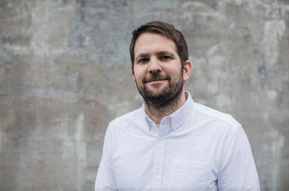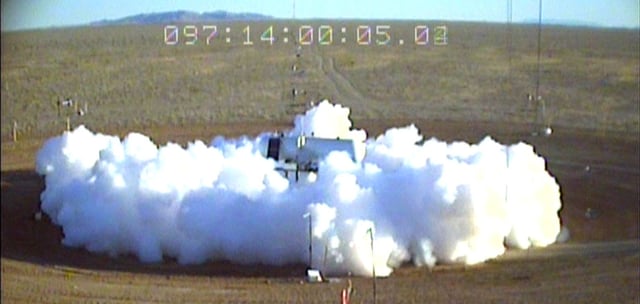In order to limit global warming, according to the UN Climate Panel, CO2 emissions in the world must be zero by 2050. Zero emission solutions based on hydrogen are central to achieving this goal.
Safety must be the number one priority, says Olav Roald Hansen, a hydrogen expert at LRQA: “The properties of hydrogen and ammonia are very different from conventional fuels. Producers of vessels, vehicles and infrastructure must understand these differences and design safe systems.” For the first time, a safety guide for hydrogen-based infrastructure has been made publicly available in Norway.
If we are to achieve national and international climate targets, emissions must be halved by 2030 and reach zero by 2050. This will require cutting emissions in all sectors, including shipping. Since zero emission fuel based on hydrogen is somewhat new, there is still uncertainty about both the fuel itself and how best to produce, transport and bunker it. It has been reported to the hydrogen cluster Ocean Hyway Cluster by several interested parties that an overview of the safety risks is essential for them to be comfortable with investing in groundbreaking innovation.
 For the first time in Norway, a guide on safety and regulations for hydrogen based infrastructure has been made publicly available. LRQA has written the report on behalf of OHC. The report emphasizes safety by discussing the learning experiences from accidents and large-scale tests as well as the current regulations and requirements for approval of facilities.
For the first time in Norway, a guide on safety and regulations for hydrogen based infrastructure has been made publicly available. LRQA has written the report on behalf of OHC. The report emphasizes safety by discussing the learning experiences from accidents and large-scale tests as well as the current regulations and requirements for approval of facilities.
There is a great need to understand the safety and risk aspects of hydrogen-based fuel in order to create safe and cost-effective solutions for the future.
"Hydrogen-based fuel is absolutely manageable. But compared to the fuel we are used to, the risk of explosion is greater for hydrogen. Furthermore, ammonia, among other things, has the challenge of being toxic. Therefore, extra attention must be given to designing safe systems”, explains Olav Roald Hansen of LRQA. The report will serve as a guide for the member companies in the OHC when it comes to production, transport, storage and bunkering. 41 companies in the hydrogen industry are members of the OHC. The report is seen as a starting point for the further work on safety and social acceptance.
The authorities must be present in the field
Hansen is keen to understand the properties of the various fuels in order to ensure safety. "It's not the energy carriers themselves that are dangerous, but the way they are handled," Hansen explains.
What is needed for Norway to get the safest possible hydrogen and ammonia infrastructure?
 "The properties of hydrogen and ammonia are very different from the fuels that people are familiar with. Producers of vessels, vehicles and infrastructure need to understand the differences and design the systems safely for users with varying levels of expertise and for different environments" says Hansen. "If you do not have the knowledge yourself, you should seek expert assistance. Relevant authorities such as the Norwegian Maritime Directorate and the Directorate for Social Security and Emergency Management must also do their best to guide and care for us", Hansen concludes.
"The properties of hydrogen and ammonia are very different from the fuels that people are familiar with. Producers of vessels, vehicles and infrastructure need to understand the differences and design the systems safely for users with varying levels of expertise and for different environments" says Hansen. "If you do not have the knowledge yourself, you should seek expert assistance. Relevant authorities such as the Norwegian Maritime Directorate and the Directorate for Social Security and Emergency Management must also do their best to guide and care for us", Hansen concludes.
When pressurized ammonia is discharged, a cloud of fog is formed which is heavier than air and can create a hazardous zone of considerable area (Photo: From the Jack Rabbit Experiments 2010, U.S. Army). One of the recommendations in the report is to consider transporting and storing ammonia in a refrigerated form, as evaporation during any discharge, and thus the hazardous area, will be smaller.

Facts about the HyInfra project
- HyInfra aims to reduce uncertainty and risk so that actors may take the necessary steps to realize hydrogen projects in Norway;
- By the end of 2021, the goal is for one infrastructure project to be started by members of Ocean Hyway Cluster;
- On 30th April 2020, the first findings from the project were presented to the 38 member companies of the OHC;
- The first discoveries include an interactive map of the future hydrogen demand in Norway and reports related to speedboats, ferries, the offshore industry and cruise ships.
Facts about Ocean Hyway Cluster (OHC)
- OHC is a hydrogen cluster working to get started with the use of hydrogen in the maritime sector in Norway;
- They are a driver for green growth, innovation within the hydrogen industry and with other industries;
- They create meeting places for 41 national and international member companies affiliated with the hydrogen industry;
- OHC is supported by Norwegian Innovation Clusters and run by Hub for Ocean.
Read the original press article (Norwegian).
Ammonia discharge information and image source.